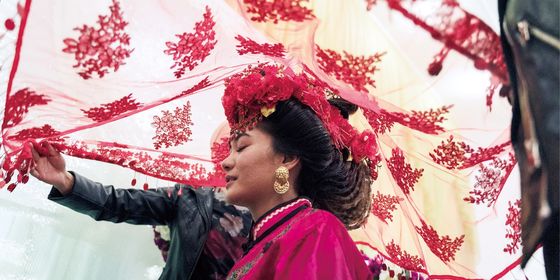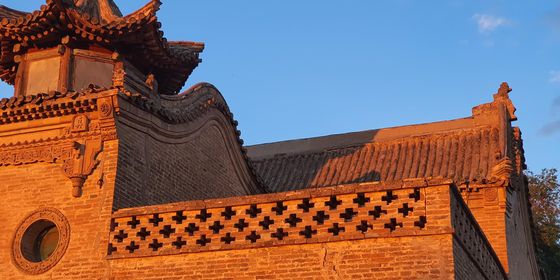In a temple in the clouds, the ancient Daoist religion tries adapting to the 21st century
High in the clouds on Leigutai Mountain—known as “Shaanxi’s Little Wudang Mountain” after the holy Daoist site in northern Hubei province—Priest Xuan Zhao pours green tea and discusses the newest young additions to the temple ranks. “It is difficult to compete with smart phones,” he says.
Xuan is the head and caretaker of the temple, known simply as daoshi (道士), or “Dao practitioner.” Having overseen the affairs of the temple for a decade, Xuan has managed to attract three young men between the ages of 17 and 27 since 2017 to become his followers and live at the temple. It’s a small victory from the lonely existence he led with just himself and two assistants when he first took charge in 2010.
The lives and opportunities of young Chinese have changed dramatically since Xuan first decided to follow Dao in the 1980s. Sixty years ago, Leigutai boasted four full-fledged priests, and Xuan dreams of reaching this level again. Sometimes it seemed like an uphill battle, with an increasingly digitized young generation preferring city life and the worship of pop stars. “Young people today are not immediately interested in the depths of the Dao,” Xuan says. “But without them there won’t be anybody to take over when I am gone, so I have to try.”
Originating some time during the Warring States period (475 – 221 BCE), Daoism is the only major Chinese religion that is entirely homegrown. Many Chinese consider the sage Laozi to be the founder of Daoism and the author of its most sacred text, the Dao De Jing. The religion enjoyed its ups and downs through the ages—soaring to unprecedented heights during the Song dynasty (960 – 1279), when the Huizong Emperor added Daoist priests to his court to teach him the secrets of alchemy—while retaining a status on par with Buddhism and Confucianism throughout most of Chinese history.
Daoism was standardized by the PRC after 1949 as a “religion”—a concept only arriving with Westerners in the late 1800s—and grouped together with folk religions all over China, some of them wildly inconsistent with original Daoist philosophy. Because of this, the estimate of the number of Dao followers differs widely. According to government figures, there are over 40,000 practicing priests and nuns scattered across more than 9,000 temples in China. It is estimated that more than 10 million people consider themselves Daoists, and more than 100 million participate in some form of Daoist or folk religious activities.
A New Way of Dao is a story from our issue, “Dawn of the Debt.” To read the entire issue, become a subscriber and receive the full magazine.













